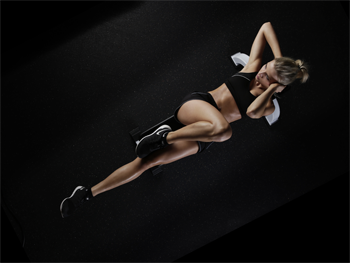Heba Shaheed Pelvic Organ Prolapse Awareness Month Interview

The Pelvic Expert Shares Her Top Tips for Living with Prolapse
June is Pelvic Organ Prolapse Awareness Month. Heba Shaheed from The Pelvic Expert shares her top tips for living with prolapse.
https://thepelvicexpert.com/
Interview with Heba Shaheed
Question: What is pelvic organ prolapse?
Heba Shaheed: Prolapse is a sagging down of one or more of your pelvic organs (bladder, uterus, rectum). This can be due to laxity, overstretching or tearing of the connective tissue and ligaments in your pelvis, or due to weakness or tearing of your pelvic floor muscles.
Question: Doesn't prolapse only affect the elderly?
Heba Shaheed: Prolapse can be caused by childbirth, ageing or chronic constipation. Many people mistakenly think prolapse only affects women after menopause, however it can manifest as early as your first birth no matter how old you are.
You are more likely to develop prolapse if you have had an assisted birth (forceps, vacuum), a prolonged labour, or if you have had a tear of your pelvic floor muscles.
Question: How do you know if you have prolapse?
Heba Shaheed: Approximately 1 in 3 women have pelvic organ prolapse. The common signs and symptoms include:
Pelvic pressure (dragging, heaviness)
Low back pain
Low abdominal pain
Bulge vaginally
Bladder or bowel symptoms such as incontinence and incomplete emptying
 Question: Does exercise make pelvic organ prolapse worse?
Question: Does exercise make pelvic organ prolapse worse?
Heba Shaheed: There is a common misconception that women who have prolapse cannot exercise. Sometimes exercise can worsen symptoms if your pelvic floor and surrounding muscles are weak, however with proper intervention and retraining, most women can return to exercise.
It is crucial that women with prolapse reconnect to their core muscles - the diaphragm, pelvic floor, deep abdominals and deep back muscles. In particular, they must retrain their pelvic floor muscles to engage in daily activities as well as during fitness activities.
I recommend that all women with prolapse consider a pessary, which is a support device inserted into the vagina which helps relieve the pressure in the pelvis and on the pelvic floor, whilst providing support to the pelvic organs. A pessary should definitely be worn with fitness activities that involve high impact, such as running and jumping, and with heavy lifting.
Having a prolapse does not have to limit your fitness activities and I have worked with thousands of women with prolapse, helping them to return to the exercise they love. The focus needs to be on pelvic floor activation during movement and breathing, rather than simple kegel strengthening exercises.
I highly recommend resistance training, whether it is body-weight exercises or weights-based exercises. Strengthening the large muscles that support the pelvis can reduce the symptoms of prolapse. Building the buttock muscles, back muscles, abdominal muscles and thigh muscles will help to create strength and stability in the pelvis which will enhance the activation of the core system.
Question: Should I avoid squats if I have prolapse?
Heba Shaheed: There is a misconception that women with prolapse should avoid exercises such as squats, however this is unrealistic and can be detrimental. When performed correctly and with pelvic floor activation, squats are an excellent exercise for building the buttock muscles, which help to build the pelvic floor muscles, leading to increased pelvic support.
In our daily life, we bend down, sit down, get in and out of cars, and so on - and this is essentially the same mechanics of a squat. It is vital to retrain our brains and bodies to perform a squat correctly, ensuring the gluteal muscles and pelvic floor muscles are engaging.
Question: Can diet help the treatment of prolapse?
Heba Shaheed: Fixing digestive problems can be really beneficial for the symptoms of prolapse. If you're bloated, constipated or gassy, the increased pressure in your abdomen can cause more pressure on your pelvic organs. This can lead to more symptoms of pressure, pain or bladder complaints.
Prolapse is largely an issue of compromised connective tissue, and the building blocks of connective tissue is collagen. Eating foods high in protein, including collagen protein, can be helpful for repair as well as for digestive health.
Minimising constipation through adequate hydration, increasing leafy green vegetables and seed intake is important to reduce pressure on the pelvic organs. Identifying food intolerances and inflammatory triggers can help reduce constipation and IBS symptoms.
Question: Can you share your top tips for managing prolapse?
Heba Shaheed: Consider wearing a pessary to take the pressure off your connective tissue and muscles.
Avoid inflammatory foods that cause bloating, gas and constipation. If your digestive system is unsettled, there is increased pressure down on your pelvic organs and pelvic floor.
If you have a chest infection or hayfever, and are coughing or sneezing a lot - get this fixed ASAP. This creates a large amount of pressure on your pelvic floor and can make prolapse symptoms worse.
Ensure your pelvic floor muscles coordinate properly i.e. squeezing and lifting your pelvic floor on exhale and on exertion.
MORE



